Are you thinking of adding some sage to your garden but aren’t sure where to start? Sage has a variety of different uses, and is a welcome companion plant to many different types of plants. In this article, gardening expert Taylor Sievers examines the exact steps you’ll need to take to successfully plant, grow and care for sage in your garden.
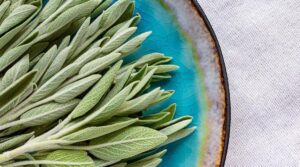
What new gardener can resist a soft-textured foliage, musky-scented, useful herb that presents itself in any number of shapes, sizes, and colors? You may be wondering—what is this intriguing specimen? Well, you’ve undoubtedly heard of this plant before, but the common name for this plant is sage!
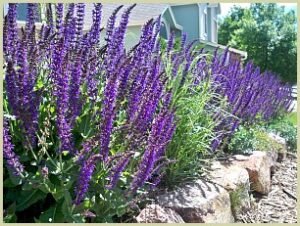
The name sage may make your thoughts drift to the familiar plant with gray-green foliage known as common garden sage or culinary sage. This herb, in Latin known as Salvia officinalis, is one of more than 800 sage species (and counting) within the Salvia genus. These plants are known not only for their herbal properties, but they are popular in the kitchen and provide texture and color to the garden landscape as well!
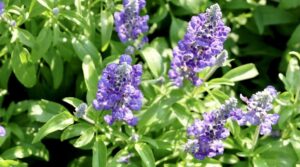
All Salvia species plants are members of the Lamiaceae family, or the mint family. Some fun characteristics about this family are that they all have square stems with leaves arranged in opposite pairs along their stems. Beyond these characteristics, you’ll find several things that are different within the Salvia genus, namely leaf color, size of the plant, colors of the flowers, and even common herbal, culinary, or medicinal uses! Read on to learn more about this amazing perennial herb.
Plant History

Salvia officinalis, the focus of this article, also known as common garden sage, is native to the Mediterranean region. Salvia plants, in general, have a worldwide origin, however. Common sage was used in Roman religious ceremonies and was cultivated for many centuries in Europe for culinary and medicinal purposes.
Egypt and Greece were two other ancient societies that utilized sage. The genus name Salvia means “to be in good health,” “to save,” or “salvation,” while the species name officinalis is a reference to an herb store or pharmacy.
Sage was known as the herb of immortality, domestic virtue, health, and wisdom. The word “sage” is from the Latin “sapere,” which is defined in English as “be wise.” It was believed that if sage flourished in a home garden it was a sign that a woman was in charge of the household. Herbalists John Gerard and Nicholas Culpeper of the 1500s and 1600s believed that sage was good for memory.
Cultivation
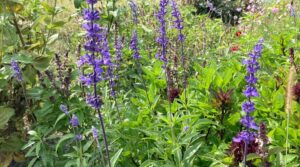
Historically, sage was used to improve fertility, stop bleeding, heal minor skin wounds, treat hoarseness or cough, improve memory function, treat intestinal gas or upset stomachs, and treat infections of the mouth, nose, and throat. Of course, sage has also been a popular culinary herb in most Mediterranean countries since ancient times.
Albania, Turkey, Germany, and Morocco are some of the top-producing countries of sage leaf today. In some countries, the overharvesting of wild sage has led to native population decline.
Propagation
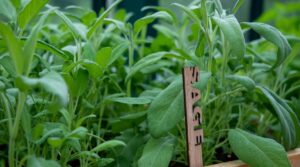
Sage can be propagated by seed, cuttings, division, and layering. Some varieties are only available by cuttings, while most of the culinary or common varieties of sage can be grown from seed. Read on to learn more about each type of propagation for your sage plant.
Starting From Seed
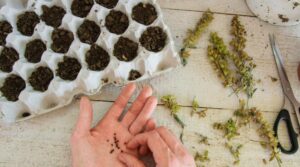
To start sage from seed, you’ll first need to decide whether you want to start seed indoors or directly sow into the garden.
Start Seed Outdoors
If sowing directly into the garden, plant the seed on the average last date of frost for your area in the Spring or as soon as you can prep your garden. Plant seeds no deeper than a ¼ inch depth and a few inches apart in the row. Thin your plants as they emerge to the proper spacing (usually 12 inches for culinary sage).
Sage seeds will benefit from stratification. Over time, seeds have developed a way to protect themselves from germinating at an inappropriate time, whether too early or too late. Therefore, some seeds must go through a period of chilling before they will germinate.
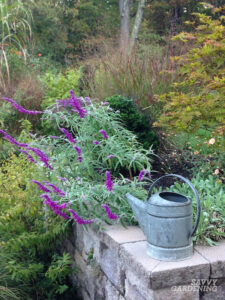
When a gardener purposely chills a seed, this is called stratification. Some people will put seeds in the freezer or refrigerator to fulfill this requirement for certain seeds. Pop your seeds into a waterproof, airtight bag or jar and place them in the refrigerator for one week for better germination results.
If you’re planning to start your sage seeds indoors, make sure you do this at least 6 to 8 weeks prior to your last estimated frost. Remember, plants in the Salvia genus will benefit from one week of stratification (or chilling). In order to accomplish this, you can chill the seeds first, or you can plant your seeds into a cell propagation tray or small pots and place them in the refrigerator for one week.
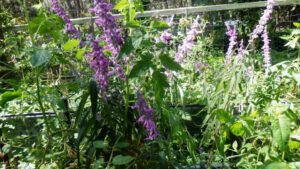
Start Seed Indoors
To start seed indoors, fill a propagation tray or small pots with seed-starting mix. Make sure the mix is moist, but not soaked. Place the seeds on the surface and lightly press them into the seed-starting mix with your finger.
Cover the seeds with a light dusting of vermiculite or seed-starting mix, making sure that the seeds are buried no deeper than ¼ inch. Salvia seeds require light to germinate.

Bottom water your pots or cell trays to reduce damage to seedlings and incidence of disease. This can be accomplished by placing the cell tray inside a solid tray (they’re often called 1020 trays) or a dish for small pots and watering into the tray or dish. The water will be wicked up through the holes in the bottom of your container and distributed evenly throughout your seed-starting mix.
Propagating by Cuttings

Propagating sage by cuttings is probably one of the most popular methods because starting from seed can be slow and have poor results. Choose a plant that is young, healthy, and vigorous to take your cutting from, first of all. Take cuttings early in the morning while the plant is full of water rather than waiting until the end of a hot, dry day.
Using a clean, sharp knife or pair of snips, clip at least 4 to 6 inches off the tip of a branch or stem, or cut right where the new stem growth meets the old, woody growth of the plant just above a set of leaves. Strip the bottom leaves off of the cutting, leaving only 2 to 4 leaves on the plant.
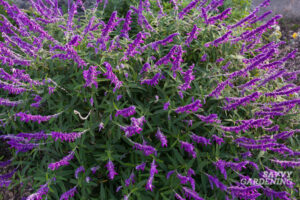
Using a dibble or pencil, poke a hole into your loose seed-starting mixture or sand/peat mixture and place the stem of the cutting into the hole, making sure that at least one or two nodes (places where you stripped the leaves off) is buried. This is where your new root growth will come from. Pinch your sand/peat mixture closed.
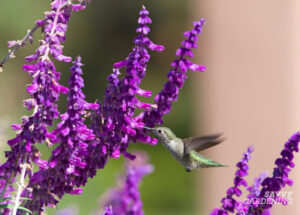
Keep your cuttings in an area of high humidity to prevent the leaves from wilting while the plant begins to grow roots. You can do this by placing your cuttings in an area of indirect light and misting the leaves periodically to keep the humidity up.
Clear plastic domes or even cutting the top off an old water bottle can be used as humidity domes. Warming the bottom of your pot or tray will help jumpstart root growth as well. You can do this by purchasing a seedling heat mat.
Some people will put their cuttings in a warm place, like the top of a refrigerator, to jumpstart root growth. Make sure the sand/peat mixture stays moist. In a few weeks, you should have root growth!
Propagating by Division
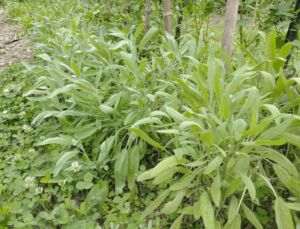
If you notice your sage plants are starting to decline in health and vigor, this likely means it is ready to divide your plants! This is also a great way to propagate new sage plants. To divide, gently soak the soil 12 to 24 hours beforehand. Brush away mulch at least 6 to 8 inches away from the edge of the leave and dig with a spading fork or sharp spade.
Sink the spade into the soil to its full depth, working around the plant at a distance of one or two inches outside the drip line (the outside of the plant’s leaves). Circle the entire plant and make sure you are sinking your tool in straight in order not to damage the roots. Keep circling the plant, moving further out if you notice you are hitting the roots until you are able to lift the root ball out of the soil.
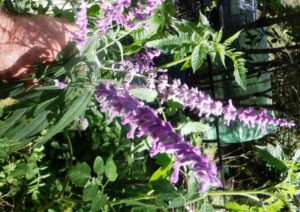
Keep the roots cool and moist until you replant. Remove any dead plant growth at this time. Pull the root system apart into two or three sections using your hands or a sharp tool. Plant your new divisions into the soil or into a pot, making sure that you press the back filled soil down to remove any air pockets. Water well for the next few weeks as the plant starts to establish itself. Make sure you discard any diseased or unhealthy sections of the plant!
Propagating by Layering
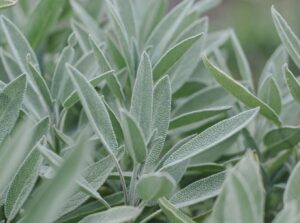
An additional way to propagate sage is by layering! The steps for this method were referenced from The Plant Propagator’s Bible by Miranda Smith.
The first step is to bend a sage stem down to the ground. In the middle of the stem, take a sharp knife and wound the plant (basically, make a small cut). Make sure that the stem is still intact (you don’t want to sever it completely).
Insert a wooden matchstick, toothpick, or small pebble to keep the wound open. Pin the stem into the soil using a fabric stable or anything you can fashion to keep the stem in the ground, like a piece of wire bent into a U-shape.
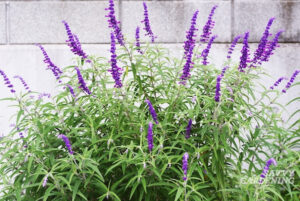
Push the soil over the wounded part of your stem, making sure to tamp the soil down in order to push out any air pockets. You can place a rock over the soil of the buried stem as an extra measure of security. Keep the soil moist while the stem is rooting. Eventually, you will see new growth on the stem, which indicates that your plant has rooted.
Using a pair of sharp snips or clippers, sever the new plant from the stem of its parent. Move your baby plant to another part of the garden or into a pot and water well while it continues to establish. Sometimes it is best to leave the plant in its place for a year before moving. You can also leave the plant in place and dig up the parent plant to discard if you are trying to rejuvenate your sage patch.
How to Grow Sage
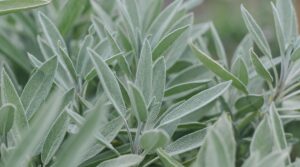
Plant sage in full sun (at least 6-8+ hours of direct sunlight per day). Sage can tolerate partial shade conditions (2-6 hours of direct sunlight) as long as the soil is well-draining. This herb requires well-draining soil and even prefers shallow, rocky soil. Sage has medium moisture requirements. In fact, these plants can often tolerate conditions that are dry for some time.
If growing from seed, be aware that sage may not flower in the first year. This is usually not a problem for culinary purposes, as the part of sage used in dishes is the leaves. It can take up to 75 days for sage grown from seed to be ready for its first harvest.
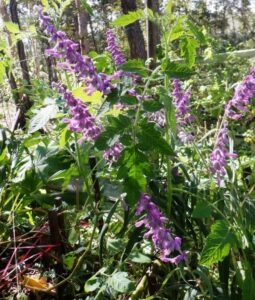
Space your culinary sage plants 1 to 2 ½ feet apart if you are transplanting into the garden, or sow sage seeds 1 to 2 inches apart and thin to desired spacing after seedlings emerge. A typical bed of culinary sage is usually arranged in rows 18 inches apart with plants spaced 12 inches apart within the row.
Other Salvia species plants grown for ornamental purposes are typically spaced about 12 inches apart at least, but this can vary depending on species and variety.
To maintain vigorous and healthy growth of your culinary sage plant, you should cut 6 to 8 inches from the tips of stems at least twice during the growing season. This will encourage new, lush growth.
Pruning will also prevent the plant from going to flower, which isn’t typically desired for a sage plant used for culinary purposes. Allowing a sage plant to flower will signal the plant to put more energy into the flower buds and seed development, which may hinder the leaf growth of your plant.
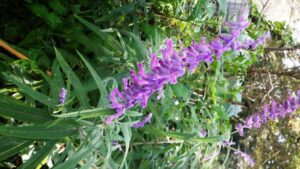
If your sage plant happens to start pushing out undesired flower shoots, don’t worry. Simply pinch or prune off the flower buds.
After 3 to 4 years, you’ll likely see the vigor of your sage plants decline. Sage is considered a short-lived perennial, so it is wise to replace your old sage plants with new sage plants around this time to maintain excellent harvests and a healthy planting. Another way to rejuvenate your sage patch is to divide your sage plants (see above).
When and How to Harvest Sage
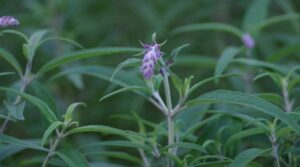
Harvest sage leaves any time before flowering or during flowering. Pick the leaves as desired, but make sure to not overharvest. Make sure that at least 50% of the plant remains because if you cut back or harvest too much the plant will stop producing.
Individual leaves or stems can be harvested from the plant. Additionally, the flowers of culinary sage are also edible and can be collected during the Summer if you want your plant to flower.
Varieties
Varieties of sage range in plant habit, leaf shape, leaf size, and color. Here’s a list of some well-known or popular varieties of common garden sage (Salvia officinalis):
Common Sage
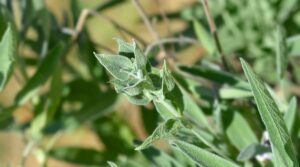
This is basically the typical culinary sage plant that is easily propagated from seed and is typically very hardy. The flowers are small, lipped, and purple and the leaves typically have an elliptical shape.
Berrgarten
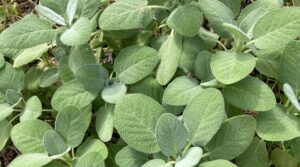
Discovered at the Berrgarten Mansion in Germany, this gray-blue-silver leafed plant has extra-large, round leaves with a bushy habit that is full down to the base of the plant. This variety is hardy to Zone 5.
Purpurascens or Purpurea
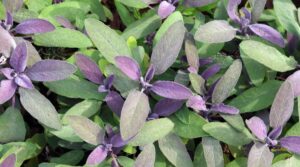
This variety is also known as purple sage. True to its name, the leaves of this plant are purple and strongly flavored. The plant reaches about 18 inches tall and is excellent as an ornamental. It is not as hardy as common sage, however, with some stating that it is only somewhat hardy to Zone 5.
Tricolor
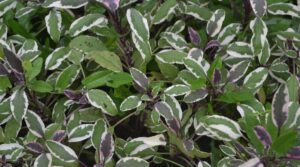
This variety has green leaves with white edges and rose-colored streaks. This sage plant is grown often as a houseplant and is hardy to Zone 6.
Compacta
This variety has smaller leaves and a very compact growth habit, topping out at 10 inches. This variety is propagated by cuttings only (no seeds are available). ‘Compacta’ is an excellent choice for rock gardens and as a border plant.
Icterina
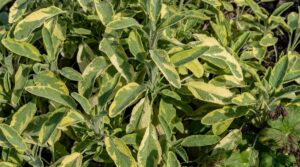
This variety of sage has golden variegated leaves and is typically used as an ornamental plant. ‘Icterina’ is considered one of the hardiest of the sage plants, possibly surviving down to Zone 2.
Holt’s Mammoth
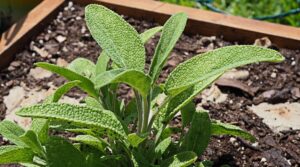
This variety has characteristics of a typical sage plant, but the leaves are much larger.
Beyond these cultivars, there are several other species of Salvia plants that can also be used for herbal or culinary uses. Here are a few of the most popular:
Clary sage (Salvia sclarea)
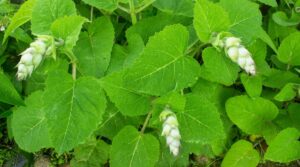
This species is a biennial, typically, with large flowers of white, blue, pink, and purple. Clary sage can reach almost 4 feet tall. The plant forms a rosette and the flowers emerge on spikes from the base. The essential oils are used in perfumes and the leaves add flavor to liqueurs, vermouths, and wines.
Pineapple sage (S. elegans)
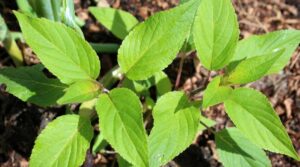
This species has fragrant leaves and slender spikes of red flowers. The leaves are pineapple scented and used to flavor drinks or used as garnishes. This plant is grown as an annual north of Zone 8.
Spanish sage (S. lavandulifolia)
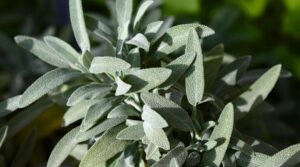
This species is also known as lavender sage, and it resembles narrow-leafed garden sage. It has a lavender-like fragrance and the oil is extracted for toiletries.
Common Pests and Diseases
When it comes to sage, there are many different pests and diseases that can plague this plant. In this section, we look at everything you need to know about what can harm these plants, whether it’s by pests or disease.
Powdery Mildew
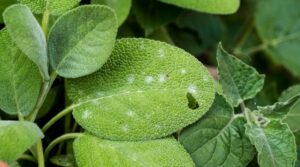
As long as sage is grown in well-draining soil, pest problems will be minimal. Spacing your plants adequately will promote good air circulation, and therefore reduce the incidence of foliar diseases. Some common pests and diseases of sage are slugs, spider mites, spittlebugs, root rot, and wilt.
Root rot and wilt can largely be prevented by planting your sage in well-draining soil in full sun. Root rot is prevalent when soils are soggy or saturated for an extended period of time.
Pathogens that cause wilts gain access to the plant’s vascular tissue called the xylem, which is used to pull water up into the plant. When a plant becomes infected, the xylem will subsequently become blocked and cause wilting, yellowing, and overall decline of the plant.
Wilts can be spread via old infected plant debris, seed, soil, or water. Removing old, diseased plant debris, purchasing seed from reputable sources, and planting your sage in well-draining soil will help prevent fungal or bacterial wilts. For this reason, growing your sage in a pot or raised bed is an excellent idea.
Spider Mites
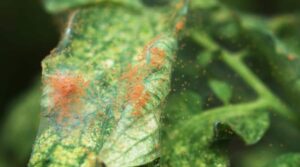
Spider mites are small eight-legged arachnids (similar to ticks) that are fairly common. They cause flecking, discoloration (bronzing), or scorching of leaves. Leaves that are damaged may subsequently die and drop from the plant.
Severe infestations can ultimately kill the plant. The best way to control spider mites is by releasing or promoting predatory insects, such as the lady beetle, minute-pirate bugs, predatory thrips, and big-eyed bugs.
Spider mites often become a problem when insecticides are used in the garden that kill their predators. Another cultural control would be to periodically spray a forceful stream of water on your plants. This will physically remove large spider mites and kill smaller spider mites. This is especially important during dry conditions.
Slugs
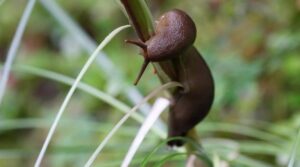
Slugs are slimy, brown to gray mollusks similar to clams and oysters. They have two pairs of “feelers,” one set for carrying the eyes and the other set used for smelling. They leave a slimy trail as they move. Slugs will feed on the leaves and fruit of plants.
The best way to control slugs is through various methods like encouraging natural enemies (toads, snakes, beetles, and birds) or planting in an area less conducive to slug inhabitation (avoid shady, wet areas). Slugs can also be baited or hand-picked off the plant.
Spittlebugs
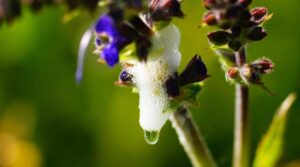
Spittlebugs produce a small, frothy wet mass on plants that literally resembles a clump of spit. The nymphs (baby spittlebugs) live within these frothy masses. Adult spittlebugs are often called froghoppers, due to their large hind legs used for jumping.
Feeding by spittlebugs generally does not cause too much damage, but leaves can become irregularly shaped as a result. Reduce weeds in your garden, forcefully spray your plants with water, and physically pick off or remove spittle masses from your plants if these insects become a problem.
Plant Preservation
Fresh sage leaves can be stored in the refrigerator loosely packed in a plastic bag for up to 2 weeks.
To preserve sage, it is best to either freeze or dry the leaves or flowers. In order to freeze sage, chop the leaves and place them in water or olive oil in ice cube trays, and freeze.
To dry sage leaves, place the leaves on a tabletop or screen in a warm, dry area with excellent ventilation. You can turn the leaves periodically over the drying time to promote even drying.
Avoid bright sunlight and cool conditions, which will bleach the leaves and result in poor quality of your dried product. Sprigs of the plant can also be hung in loose bundles and dried, then the leaves removed once dry and brittle. Once the leaves have dried adequately, store them in an airtight container. Sage flowers can be dried in the same way that the leaves are dried.
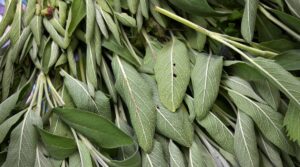
Common Uses
There are many different uses of sage, including culinary uses, as well as others. In this section, we examine all the best ways to utilize this plant in your garden once it’s been grown and harvested.
Culinary Uses
ooo
Sage has many culinary, herbal, medicinal, and ornamental uses. The first use for sage would be for flavoring dishes including fish, pork, poultry, vegetables, and as a seasoning in sausages.
In the United States, it is traditional to prepare stuffing seasoned with sage for Thanksgiving. In other countries, sage is used in a variety of sauces. I love using chopped sage in my chicken noodle soup and in my homemade jambalaya, personally.
Other Sage bush Uses
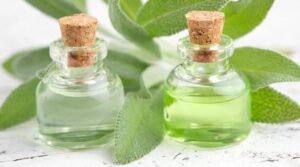
Herbalists like to use sage in many ways. Amongst linens, sage leaves are said to deter moths and other insects. Some herbalists like to boil sage leaves in water or burn sage on embers to disinfect a room. Sage smoke is said to be effective at removing foul odors from a room. Rubbing sage leaves on your teeth is said to help whiten them.
Infusions can be made from sage flowers or sage leaves. Place 1 tablespoon of dried sage flowers in a teapot of boiling water and steep for 5 to 8 minutes to enjoy a tea that is considered “light” and “balsamic.” One tablespoon of torn fresh sage leaves per cup will make a sage-leaf infusion. Adding a pinch of sugar will intensify the flavor!
Antiseptic Properties
Sage has astringent, antiseptic, and relaxing actions of the mucous membranes, so it is beneficial for inflammation of the mouth, throat, and tonsils. Herbalists make a practice of creating throat gargles and sprays using sage leaves for this reason. Consult an experienced herbalist or physician before ingesting large amounts of sage leaves for uses other than a seasoning in dishes.
Sage can be used for ornamental purposes as well. Obviously, it can be grown in landscapes or pots as an accent to the garden. Sage flowers attract both bees and butterflies. Additionally, sprigs of sage can be used to make herbal wreaths or the leaves can be used in potpourri. Some even use sage in cut flower arrangements.
Cautions
According to Medicinal Herbs: A Beginner’s Guide by Rosemary Gladstar, pregnant and nursing mothers should steer clear of sage if using it for more than just seasoning in recipes as it has a “drying” effect on the body in the way it regulates fluids. Therefore, nursing mothers may experience drying up of their breast milk. However, due to this drying property, sage helps reduce sweating and is often used as an ingredient in deodorants.
Sage also contains high amounts of the compound thujone. Taken in high doses, this compound can cause convulsions and other side effects. Thujone is volatile, so it will dissipate once cooked, which is why this is usually not a problem when sage is used for culinary purposes.
![]()
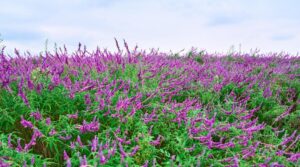
Frequently Asked Questions
Q…Does sage need sun or shade to grow?
A…Sage loves full sun (at least 6 to 8 hours of direct sunlight per day). However, some varieties can thrive in part shade (2 to 6 hours of sunlight) as long as the soil is well-draining. Sage dislikes the wet, soggy conditions that typically accompany shady areas.
Q…Which sage plants are edible?
A…Because there are several hundred varieties of Salvia known as sage, it can be quite confusing to distinguish which ones are used for edible purposes. More than likely, you won’t be ingesting any other sage plant than Salvia officinalis, known as common garden sage or culinary sage.
Other types of sage may be used as garnishes or flavorings, like Pineapple sage (S. elegans) or Clary sage (S. sclarea). Make sure you are purchasing your sage seeds or plants from reputable seed companies or nurseries that label their plants correctly, and consult experts before ingesting any herb if you’re unsure.
Q…Should I let my sage plant flower?
A…If you’re growing culinary sage (Salvia officinalis), more than likely you will NOT want your plant to flower. This is because your main harvest is of the leaves, and the plant will shift all of its energy into the flower and setting seed if you allow it to flower. This will result in poor quality leaf harvest.
Cut back your sage plants a few times over the summer to prevent flowering. If you happen to miss a flower bud, don’t worry. Just pinch off the bud! If you’re growing sage for ornamental purposes, then by all means let that plant flower. You’ll likely enjoy the blooms, and the bees and butterflies will, too!
Q…What are some companion plants for sage?
A…The scent of sage will often repel certain insects, so planting sage with vegetables affected by the cabbage moth, black flea beetles, and carrot flies will be beneficial. Some of these plants are broccoli, cabbage, collard greens, rosemary, carrots, and kohlrabi.
![]()
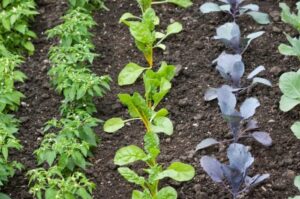
Avoid planting sage with basil and cucumbers. Sage and basil can inhibit each other’s growth. Aromatic herbs like sage can negatively affect the flavor of your cucumbers.
THIS ARTICLE WAS SOURCED FROM THE. ALL ABOUT GARDENING SITE
![]()
I do sell various sage seeds on this site as well as Mexican Sage plants. I also sell cuttings from the Mexican sage plant.Photo is below of the Mexican sage plant

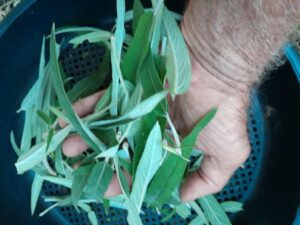
 Any questions or if buying, contact me HERE
Any questions or if buying, contact me HERE ![]()

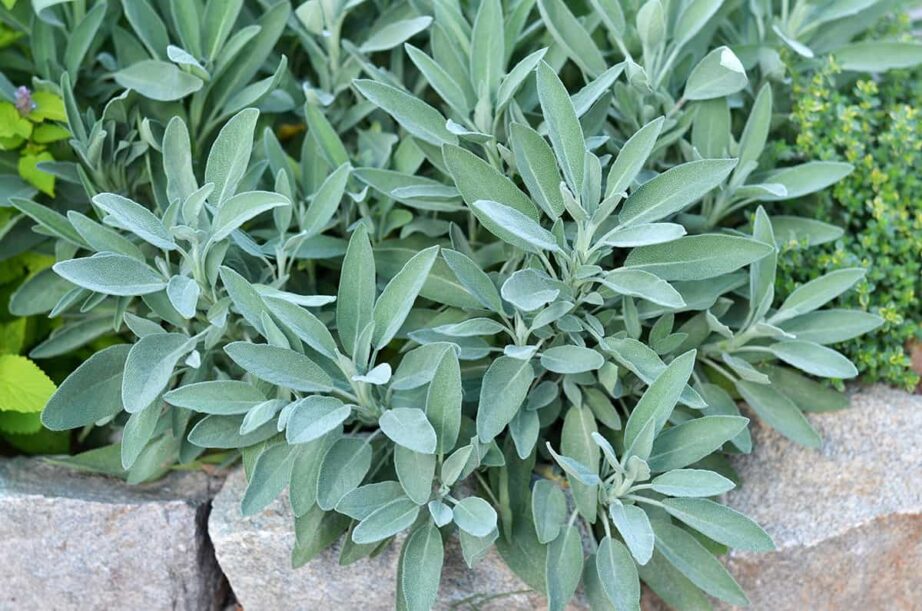
Recent Comments